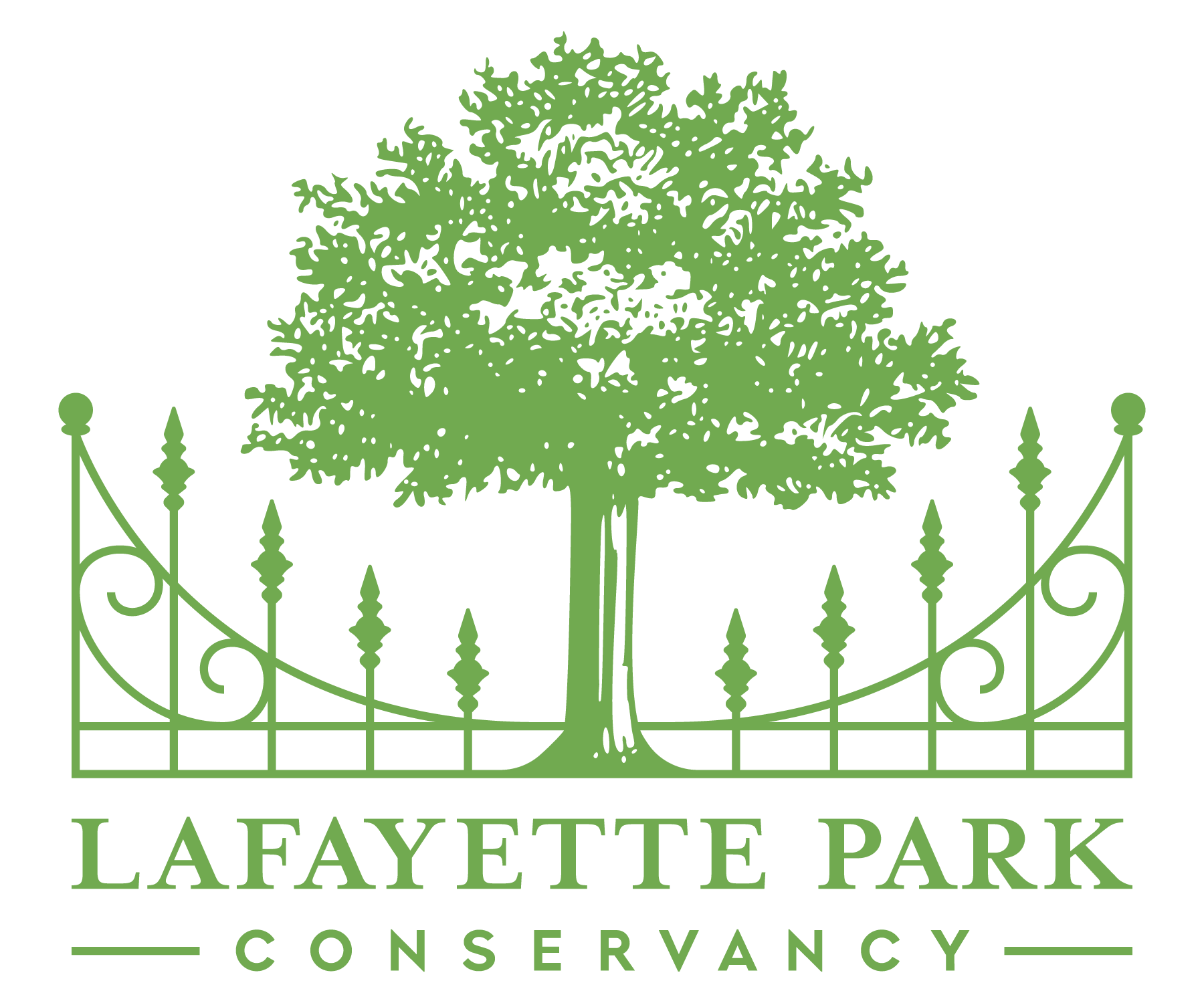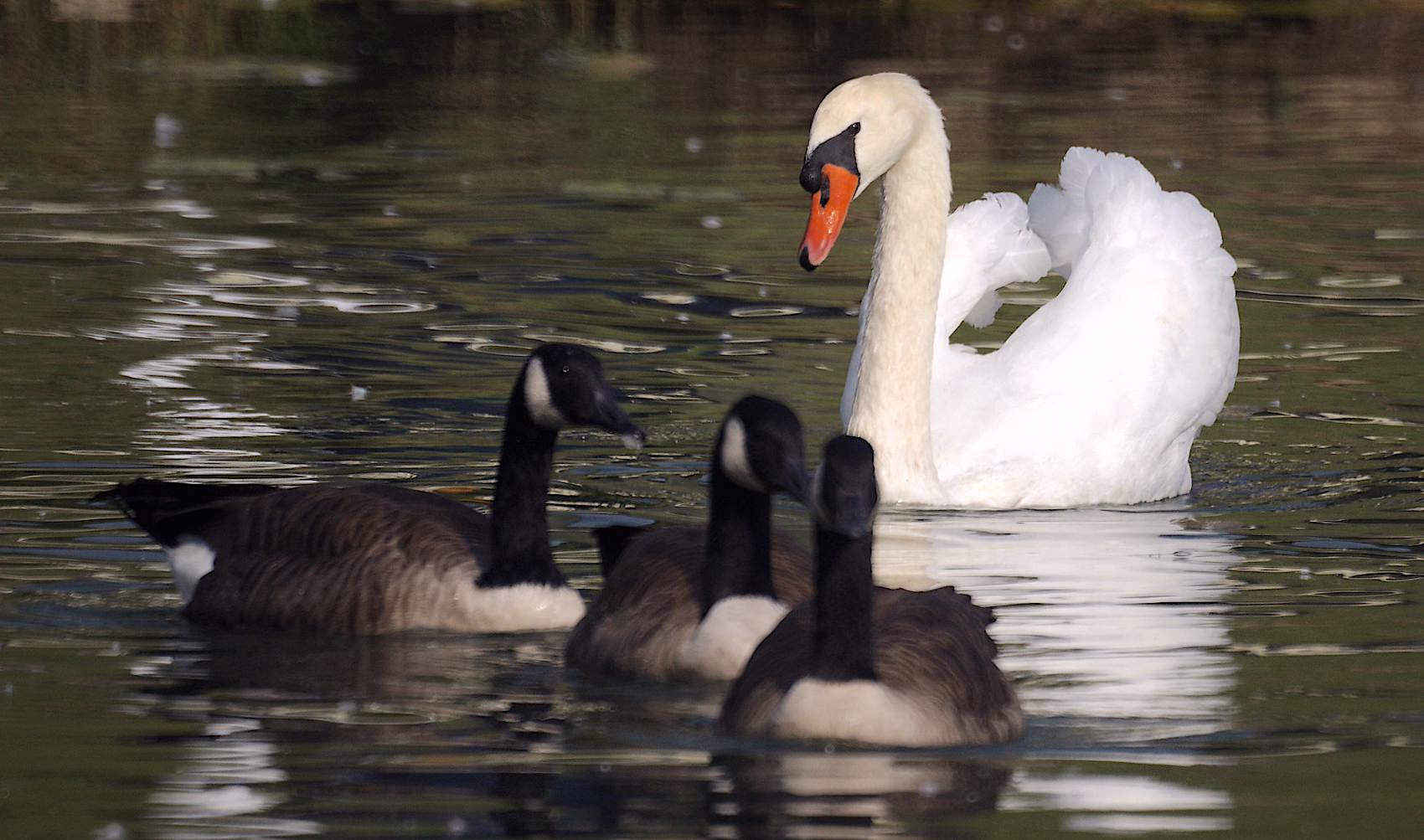BY KIERAN LINDSEY, PhD
Just in case readers assume the title of this post is a typo, let me assure you it is not. I’m fully aware that the photos featured here are of mute swans (Cygnus olor) but, like any wordsmith worth her salt, I can’t resist indulging in a little harmless wordplay. As you’ll discover later in this piece, my play on words is not only intentional, it’s also quite appropriate (at least in one specific circumstance).

The mute swan is an imposing, impressive creature — 4 to 5 feet (125-165 cm) long from tail to beak on an outstretched neck, with a wingspan of 6 to 8 feet (183-244 cm). Adult males (known as cobs) will move the needle on a scale from 20 to 32 lbs (9-14 kg), while adult females (known as pens) are slightly less massive at 17 to 23 lbs (7-11 kg).
At maturity, both cobs and pens are feathered entirely in shades of pearl and antique ivory, the standard uniform for all members of their genus. What distinguishes mutes from their native North American kin, the trumpeters (C. buccinator) and the tundras (C. columbianus, aka whistling), is a cinnabar-orange beak, bordered in jet-black with a conspicuous knob of the same tone just above the nostrils. Their legs and feet are similarly inky, a characteristic they have in common with the T-swans, whose beaks match their lower extremities.
Balletically graceful on an aqueous stage and ponderously inelegant on land, mute swans were imported from Europe in the mid-1800s to early 1900s to satisfy Victorians’ insatiable proclivity to knickknack everything in sight, including bodies of water on private estates, at zoos, and in city parks. Lafayette Park, beloved centerpiece of my historic St. Louis neighborhood, has a man–made lake that was, and remains to this day, duly festooned with these requisite introduced waterfowl.

The conscripted avian immigrants were also ferried to Australia and New Zealand, Japan, and South Africa, where they’ve managed to persist in small populations of 100 to 200 individuals. In much of the contiguous U.S. and parts of southern Canada, however, mute swans have thrived. Their ability to adjust to a range of aquatic habitats (e.g., brackish or marine inlets and estuaries; freshwater rivers, bogs, and lakes) and an assortment of landscapes from agricultural to metropolitan has proven advantageous. Tallies from between 1970 and 2000 found North American mute swan populations were growing at an average of 10% annually, doubling the population every 7 to 8 years. As a result of their successful assimilation, mute swans in the New World have seen their status reclassified from favored pet to invasive species.
As one would expect, a bird of such substantial stature has a large appetite, consuming a main course of up to 8 pounds of submerged and floating aquatic plants each day, along with side dishes of insects, mollusks, fish, tadpoles and frogs. They’ll invert to reach vegetation growing in deep water, and work the soil beneath with their wide webbed feet to dislodge tubers and whole plants that subsequently float to the surface. Various studies suggest that mutes significantly reduce aquatic vegetation density, which can have a negative impact on native species and ecosystems.

Mute, in this case, is not a literal descriptor. True, this species is less outspoken than its kin but when there’s something to say they can and will speak up… barking a hoarse territorial proclamation during breeding season; snorting or hissing with indignation when threatened or annoyed. Females call to their mates with an unhurried, affectionate glock-glock, and convene their broods with a summons reminiscent of a yapping puppy. Young offspring respond with soft whistles that rise in pitch and tempo to frantic peeps when they feel lost or anxious.

In spring, a fellow’s fancy lightly turns to courtship, renowned Victorian poet Lord Tennyson observed, and his statement holds true even when the swain is a swan. It’s a well-worn story — cob meets pen, cob courts pen, the pair engage in a commitment ceremony, and a lifelong monogamous bond is pledged, all without saying a word. Together, he and she build their love nest near, or possibly floating on, water. A large mound of wetland plants, twigs, and other repurposed materials are pushed and prodded to form a comfortable cup, and then it’s time to make some babies.
The female incubates a clutch of 4 to 10 eggs for 34 to 41 days. The chicks, known as cygnets, hatch over the course of 24 hours or so sometime in May through July. As soon as their down dries, the whole brood follows their parents to the water’s edge for a first swim, scrambling onto Mom’s back when they need to rest.

Here’s where things get moot (and you thought I’d forgotten all about that, didn’t you?)…
Lafayette Park is currently home to two mute swans. Every spring and into summer, visitors observe sprawling nests with large white birds perched calmly on top like a dollop of whipped cream (honestly, they’re hard to miss). As the calendar pages turn from spring to summer months, comments and questions begin to appear on social media sites, asking when we should expect to hear the pitter-patter of tiny webbed cygnet feet. The answer is always the same — there will be no little swans this year, or any year. The Lafayette Park swans are females and, as both birds and bees know, eggs alone do not babies make.
It’s no accident the park is cob-less. Since mute swans are not native to Missouri, special permission was needed to acquire and release these birds into a city park. The agreement prohibits introduction of a male, in part to avoid establishing a new breeding population, and in part to prevent liability lawsuits against the city. You see, male mute swans take their spousal and parental duties quite seriously, aggressively protecting their mate and offspring from anything and anyone deemed potentially dangerous, including ducks and geese, snapping turtles, coyotes and unleashed dogs, canoes and other watercraft, and yes, even people. Their defense strategy begins with a loud hissed warning,but if threats don’t do the trick the cob will physically attack, biting and striking the adversary with bony spurs in their powerful wings.


